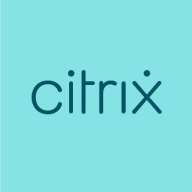

Find out what your peers are saying about VMware, Omnissa, Citrix and others in Virtual Desktop Infrastructure (VDI).

Enable secure, flexible work with the leader in virtual apps and desktops
Deliver desktop as a service (DaaS) from any cloud or datacenter
Get started with Citrix DaaS (formerly Citrix Virtual Apps and Desktops service) in minutes to provide a familiar, high-performance digital workspace experience to your users. We’ll manage the infrastructure and security. You focus on your business.
Sangfor aDesk VDI (Virtual Desktop Infrastructure) Solution is the latest virtual desktop cloud solution based on hyper-converged infrastructure. Through deeply integrated server virtualization, desktop virtualization and storage virtualization, it only takes an aDesk thin client appliance and a cloud terminal to deliver rapid deployment of cloud platform.
We monitor all Virtual Desktop Infrastructure (VDI) reviews to prevent fraudulent reviews and keep review quality high. We do not post reviews by company employees or direct competitors. We validate each review for authenticity via cross-reference with LinkedIn, and personal follow-up with the reviewer when necessary.